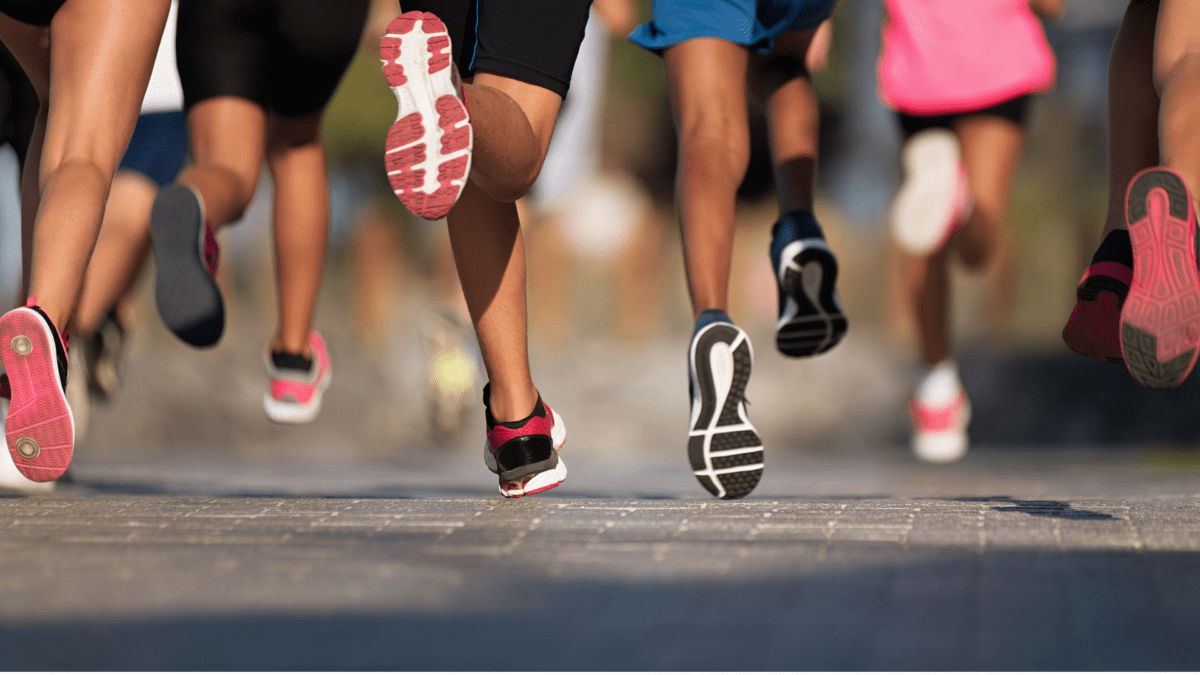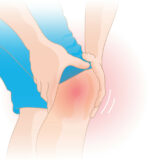6 Running Myths Absolutely Every Runner Needs to Know

Running is one of the most popular sports – not only since its increase in popularity during the COVID-19 crisis. However, there are many misconceptions about running that even trainers and therapists are not aware of. In this blog post, we will discuss the 6 most common running myths which will possibly surprise you!
Running Myth number 1: Running is a low-risk sport

Running is a linear non-contact sport without any explosive and high-impact moves. However, after football, it is the sport with the highest percentage of injuries. Every year, 24-65% of runners suffer from an injury. This can increase up to 90% in the case of runners preparing for long-distance events such as marathons. Most injuries are experienced in the knee, followed by the ankle and hip. The problem is not that running is dangerous, but that overuse injuries occur most often due to training errors: lots of runners start to fast or run too long covering a mileage that their bodies are not used to. For this reason, beginning runners are also twice as likely to suffer from an injury compared to experienced runners. Our bodies – especially – our bones, tendons, and cartilage are autistic: they don’t like change at all, so we have to make sure to change our activity levels very gradually without a sudden spike in running volume. If you have doubts about your training plan or if you’re suffering from pain during running, we would advise you to contact your local physio, running coach or make an appointment with us via the link in the description.
Running Myth number 2: Running causes osteoarthritis

Oftentimes we are told that running causes osteoarthritis. Even many health professionals still tell their patients that running is bad for their knees. But is this actually true? A review from the American Journal of Sports Medicine in 2017 showed that recreational running is actually protective of osteoarthritis. People who are not active and elite runners, running long distances every day are actually at a higher risk of developing cartilage damage. Cartilage is the cover on each joint that makes our joints glide over each other effortlessly. It acts very much like a sponge: when it is compressed, waste products are squeezed out of it, and when it is unloaded nutrients are sucked into the cartilage. This explains why no load is unhealthy and at the same time why excessive load – like in elite sports – is detrimental as well.
Running Myth number 3: It’s not necessary to do strength training for endurance sports like running

Strength training can decrease the risk of running injuries up to 50%. At the same time, it can improve performance and running efficiency. More and more people are discovering running later in life. However, continuous muscle loss takes place from the age of 45 and older, which makes strength training even more important. On top of that, strength training makes tendons and ligaments more resilient which in turn increases the runner’s capacity to deal with the load. Some runners might be afraid that strength training makes them bigger which is undesirable for running. However, training focused on strength, explosiveness, and plyometrics 2-3 weeks will not lead to excessive muscle growth and the literature reports no negative effects on endurance capacity.
Running Myth number 4: Stretching prevents injuries

Although stretching is regularly performed by many athletes, it does not reduce injuries. Even more so, there is evidence that static stretching can have a negative effect on running performance up to 24 hours. So if you really enjoy static stretching, the recommendation is to perform it after your run. As a warm-up, it’s better to perform dynamic stretching.
Running Myth number 5: Good running technique prevents injuries

Yes, running technique training to decrease the load in runners leads to a decrease in injury risk of 62% after 1 year. But what is a good technique? Heel strike is the most common technique with 70-90% of runners using this technique compare to forefoot strike. However, the literature reports no difference in injury risk between both styles in case they are performed well. So why we cannot say which running style is superior, we do know some aspects from the literature that can have a negative effect:
- A Low cadence – so how many steps you take per minute – lower than 166 steps per minute is unpreferable
- Landing with a straight knee. Landing with a bent knee between 10-20% is normal
- Lots of vertical movement will lead to more impact. What goes up, must come down
- The same is true for hard landings. So the more silent you can run, the better
- A cross-over gait: So crossing your feet while running is reported to have a negative effect on injury risk
So if you are doing one or more of the above-mentioned points, it might be worth improving them to prevent injuries.
Fun fact: Focusing on technique or breathing actually decreases running efficiency by 2-4%. So changing technique is something that has to be trained until it becomes automatic to be efficient.
Running Myth number 6: Good running shoes reduce the risk of injury

This myth probably comes from our advertising industry and is still a point of discussion. Despite many new developments in the last 30 years, none of these changes has lead to a reduction in injury risk. The most important factor is that your shoes feel comfortable. What can make sense is to choose a shoe with more shock absorption for long-distance running and less shock absorption for shorter distances. Be careful when changing running shoes, as all changes – like mentioned earlier – are not well received by our tendons, ligaments, bones, and cartilage.
To sum it up, running does not lead to osteoarthritis and recreational running even has a protective effect. However, running has a high injury risk for overuse injuries. While stretching and the choice of shoes have no effect on injury prevention, strength training and working on some aspects of your running technique can decrease the risk of injury. The most important aspect is to gradually increase your training volume. A local physio or running trainer can certainly help you with that. If you have doubts or no access to a professional, feel free to get in touch with us.
If you enjoyed this blog article, share it with your friends and family.
Thanks a lot for reading!
Yours,
Arjan




